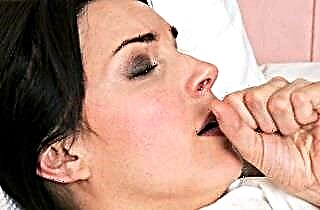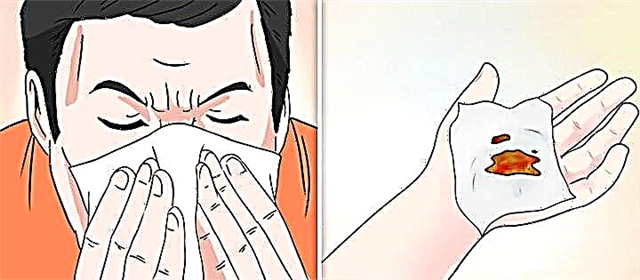An unpleasant smell behind the ears is a sign of the development of pathogenic flora in the area behind the ear. The waste products of bacteria and fungi lead to intoxication of the body and the emergence of a specific odor. The reason for the appearance of an unpleasant symptom in most cases is a reduced reactivity of the immune system, resulting from the development of infectious diseases, malfunctions of the endocrine system, skin pathologies, etc.
If it smells bad behind the ears, this may signal a lack of personal hygiene or malfunctioning of internal systems and organs. Ignoring a pathological symptom can lead to an aggravation of the state of health. The cause of the problem can be determined by the presence of accompanying signs such as skin rashes, itching, dry skin, redness, etc.
Statistical data

Why is there an unpleasant odor behind my ears? The key reason for the occurrence of an unpleasant symptom is the active development of pathogens, especially bacteria and fungi. According to the results of studies that were obtained by American specialists, more than 1000 types of pathogenic microbes "live" on the skin of a healthy person.
In the area of skin folds, there are more than 20 types of pathogens that provoke the development of skin pathologies.
During the work, scientists found out that pathogens "love" moist and warm places, which include the behind-the-ear region. The secretions from the sebaceous and sweat glands are a suitable substrate for the development of microbial flora. The metabolites of pathogenic bacteria are oxidized upon contact with air, resulting in a smell behind the ears.
Pathogenesis
What are the main causes of behind-the-ear odor in adults? The emergence of a specific fragrance is due to the active reproduction of opportunistic microorganisms that are on the skin of a healthy person. In case of violation of the barrier function of the dermis, provoked by a decrease in general immunity, colonies of pathogens begin to grow.
The human body contains more than 2 million sweat glands, which are actively involved in the processes of thermoregulation. They are conventionally divided into two types:
- epicrine - evenly distributed throughout the body;
- apocrine - localized mainly in areas of the body where there are hair follicles.
 The secret secreted by the sweat glands contains an odorous substance (isovaleric acid), which gives the secretions a pronounced aroma. In the case of active reproduction of pathogens, it increases many times over, as a result of which an unpleasant odor appears behind the ears in adults.
The secret secreted by the sweat glands contains an odorous substance (isovaleric acid), which gives the secretions a pronounced aroma. In the case of active reproduction of pathogens, it increases many times over, as a result of which an unpleasant odor appears behind the ears in adults.
Causes
Why does it smell behind the ears? Human sweat contains approximately 95% water and only 5% organic and inorganic odoriferous substances. In this regard, the sweat that stands out for 8-10 hours does not smell. But as a result of the active vital activity of pathogens, an unpleasant odor arises after the expiration of the mentioned period.
If there are malfunctions in the work of individual systems and organs, the secret secreted from the glands can have an unpleasant odor. Symptoms can be caused by:
- kidney dysfunction;
- gastrointestinal diseases;
- vegetative-vascular disorders;
- hormonal imbalance;
- infectious lesion of the ENT organs;
- malfunctions of the glands of external secretion.
If a pathological symptom occurs, you should be examined by a doctor. Untimely treatment of pathologies can provoke the development of severe systemic diseases.
Hyperhidrosis
If it smells bad behind the ears in an adult, this may indicate the development of hyperhidrosis. The disease is characterized by hyperactivity of the sweat glands, which begin to produce an excessive amount of liquid secretion. Momentary excitement, fear or stress can cause profuse sweating.
Important! Hyperhidrosis can be a consequence of the development of a more serious endocrine pathology. With increased sweating, you need to be examined by an endocrinologist.
The cause of the development of cranifacial (facial) hyperhidrosis is a malfunction of the endocrine, nervous and digestive systems. Often, dysfunction of the sweat glands is observed when a contract allergy occurs. Most often, patients with increased activity of the sympathetic nervous system suffer from sweating.
Sweat secretions located behind the ear are attractive to most types of aerobic bacteria, in particular saprophytes. If there is a smell of cheese behind the ears, most likely this is due to the active development of heterotrophic bacteria that feed on the keratinized cells of the epidermis. Untimely elimination of the pathogenic flora can cause an allergic reaction.
Seborrheic dermatitis
Seborrheic dermatitis is a dermatological disease that occurs in the localization of the sebaceous glands. Pathology develops with excessive colonization of the skin with yeast-like fungi such as malassezia furfur. The main signs of dermatitis are:
- itching;
- putrid smell;
- hyperemia;
- scaly formations;
- acne vulgaris.
Papulo-squamous disease is provoked by lipophilic pathogens, which are localized mainly in the skin folds. In a spore state, the fungus is found on the skin of any healthy person, but it is activated when favorable conditions arise, which include:
- avitaminosis;
- Parkinson's disease;
- nervous strain;
- genetic predisposition;
- decrease in the reactivity of the body;
- abuse of antibacterial drugs.
If it smells strongly behind the ears of an adult and at the same time erythematous rashes form on the skin, in 75% of cases this signals the development of dermatitis. Itchy patches tend to grow peripherally. Therefore, untimely relief of local manifestations of skin pathology can cause the rash to spread throughout the body.
Atheroma
Atheroma behind the ear is a cyst-like seal that occurs as a result of blockage of the sebaceous gland duct. The contents of the cystic formation exude an unpleasant aroma, which is due to the active development of bacteria in the liquid secretion. As a result, the cyst turns into an abscess, the opening of which leads to increased odor.
The inability to evacuate the lipophilic substance by the sebaceous ducts may be associated with:
- clogging of skin pores with dirt;
- hormonal imbalance;
- increased sweating;
- dysfunction of the neuroendocrine system.
You cannot squeeze out fatty cysts on your own, as this can lead to the addition of a fungal infection and aggravate the state of health.
An unpleasant smell behind the ears in a person can be eliminated with the help of special preparations that dilute the secretion in the atheroma. If large cysts occur, surgery may be required. Surgical treatment guarantees the absence of re-blockage of the sebaceous duct, which often happens after a course of pharmacotherapy.
Otomycosis
Otomycosis is an infection of the outer ear, resulting in inflammation. Mold and yeast-like fungi are provocateurs of pathological processes in tissues. Often the disease occurs against the background of the development of otitis media, which is associated with a weakening of local immunity.
Why does it smell behind the ears in adults? The waste products of fungal pathogens have an unpleasant, pungent odor. With the development of the disease, the most active reproduction of pathogens observed in the area behind the ear, which is due to a fairly high concentration of sebaceous glands in it.
observed in the area behind the ear, which is due to a fairly high concentration of sebaceous glands in it.
Otomycosis provocateurs are:
- hypovitaminosis;
- somatic diseases;
- infections in the middle ear;
- mechanical injury;
- dysfunction of the thyroid gland.
A decrease in the reactivity of immunity, due to the intake of cytostatics, corticosteroids and antibiotics, can provoke the development of otomycosis.
Symptoms of the development of the disease are not only an unpleasant odor, but also swelling of the auricle, severe itching, peeling of the skin, etc. Late treatment of the disease can cause fungal spores to enter the ear canal. This often leads to the development of fungal myringitis, i.e. inflammation of the ear membrane.
Lymphadenitis
The lymph nodes behind the ear are small bean-shaped formations that, in the absence of inflammation, are practically not palpable. They perform a protective and drainage function, promoting the production of immune cells that prevent the development of infectious diseases. When inflammatory processes occur in the lymph nodes in the behind-the-ear region, an unpleasant odor occurs, which is associated with the localization of pathogenic agents in them.
The development of lymphadenitis can be provoked by:
- otitis media;
- laryngitis;
- tonsillitis;
- pharyngitis;
- gingivitis;
- labyrinthitis.
The causative agents of infectious pathology are nonspecific bacteria such as staphylococci, streptococci, Pseudomonas aeruginosa, etc. The manifestations of the disease can be hyperemia, pain behind the ear, edema of the auricle, swollen lymph nodes. Inadequate and untimely therapy of the disease can lead to atrophy of the lymph nodes and the development of secondary immunodeficiency.
Smell in women
 Why does it stink behind the ears of women? The female body is much more likely to "experience" hormonal imbalance, leading to a decrease in resistance. This may be due to gestation, menopause, critical days, taking contraceptives, etc. The aforementioned exogenous and endogenous factors affect the ability of the immune system to control the development of opportunistic microorganisms on the surface of the skin.
Why does it stink behind the ears of women? The female body is much more likely to "experience" hormonal imbalance, leading to a decrease in resistance. This may be due to gestation, menopause, critical days, taking contraceptives, etc. The aforementioned exogenous and endogenous factors affect the ability of the immune system to control the development of opportunistic microorganisms on the surface of the skin.
It should be noted that the smell behind the ears in women often occurs due to the abuse of foams, hair sprays and gels. Cosmetics contribute to the blockage of skin pores, as a result of which contact dermatitis, hyperhidrosis, mycosis, etc. develop. Injury to the earlobes, provoked by wearing heavy jewelry, leads to a decrease in local immunity, which creates optimal conditions for the reproduction of a colony of pathogens.
Treatment principles
If there is an odor behind the ears in adults, how to treat it? First, you need to determine the cause of the unpleasant symptom. To do this, it is advisable to undergo an examination by a specialist who can find out what exactly triggered the unpleasant odor. Within the framework of pharmacotherapy for the treatment of fungal and bacterial pathologies, the following can be used:
- antifungal agents (Miconazole, Pimafucin) - inhibit the activity of pathogenic fungi, which leads to the elimination of local manifestations of otomycosis;
- anti-fungal drops ("Dexamethasone", "Clotrimazole") - destroy the fungal flora in the ear canal;
- antimycotic ointments ("Naftalan ointment", "Losterin") - prevent the reproduction of pathogenic mold and yeast-like fungi in the foci of inflammation;
- anti-seborrheic shampoos ("Keto Plus", "Sebazol") - normalize the work of the sebaceous glands, prevent the hypersecretion of sebum, which leads to a decrease in the number of pathogens on the skin surface;
- drugs for sweating (Bellaspon, Foramgel) - inhibit the activity of sweat glands, which leads to the elimination of hyperhidrosis;
- tranquilizers (Oxazepam, Diazepam) - suppress the activity of the nervous system, which leads to the normalization of the mental state;
- antiseptic agents ("Amukin", "Xeroform") - help disinfect the skin and reduce the number of bacterial and fungal pathogens.
Treatment of odor behind the ears in adults should only be carried out under the supervision of a specialist. When using antibacterial and antifungal agents, it is important to follow the dosage recommended by your doctor. Otherwise, a decrease in local immunity and the development of side diseases are possible.



